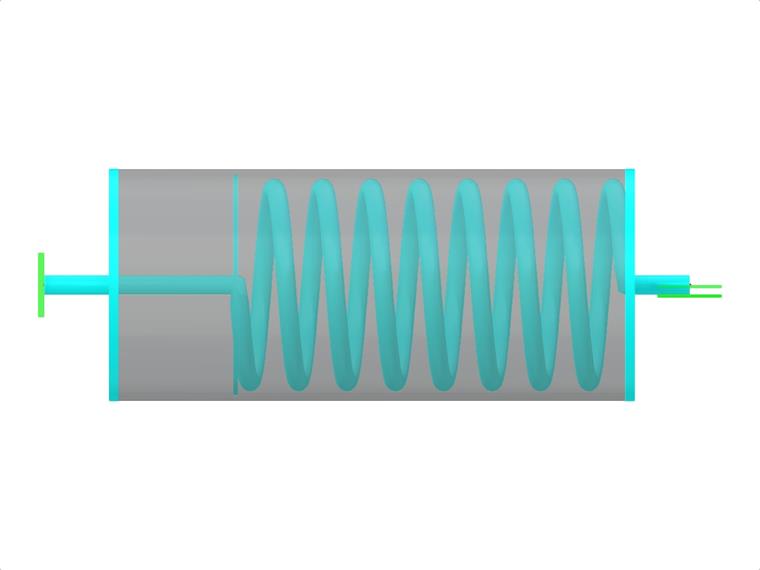Description
Kelvin-Voigt material model consists of the linear spring and viscous damper connected in parallel. In this verification example there is tested the time behaviour of this model during the loading and relaxation in a time interval 24 hours. The constant force Fx is applied for 12 hours and the rest 12 hours is the material model free of load (relaxation). The deformation after 12 and 20 hours is evaluated. Time History Analysis with Linear Implicit Newmark method is used.
| System Properties | Spring | Stiffness | k | 100.000 | kN/m |
| Damper | Viscous Damping | c | 1000000.000 | kNs/m | |
| Load | Force | Fx | 1.000 | kN | |
Analytical Solution
Kelvin-Voigt material model is a parallel connection of the spring and damper. The strain in the spring εe and the strain in the damper εv are equal (εe=εv=ε). Total stress of this model is defined as a sum of the stress in the spring and the damper (σ=σe+σv). Using constitutive equations the differential equation for the strain due to the applied stress σx is as follows:
|
E |
Modulus of elasticity |
|
t |
Time |
|
eta |
Dynamic viscosity |
This differential equation can be solved to obtain deformation of the Kelvin-Voigt material model at specific time.
C is the integration constant based on the initial conditions. For the zero strain at the beginning of loading (ε(0)=0) the strain is as follows:
This formulla can be rewritten into the form using force, deformation, stiffness and damping.
The deformation after relaxation can be calculated by means of simillar process with different initial condition:
|
ux1 |
Deformation at the end of loading (time t1) - initial deformation for the relaxation |
The results are summarized in the following table.
RFEM and RSTAB Settings
- Modeled in RFEM 6.05
- Time History Analysis with Time Diagram is used
- Linear Implicit Newmark method is used
Results
| Quantity | Anylytical Solution | RFEM 6 | Ratio |
| ux(t=12 h) [mm] | 9.867 | 9.867 | 1.000 |
| ux(t=20 h) [mm] | 0.554 | 0.554 | 1.000 |
The time behaviour of the deformation ux can be seen in the following figure.


